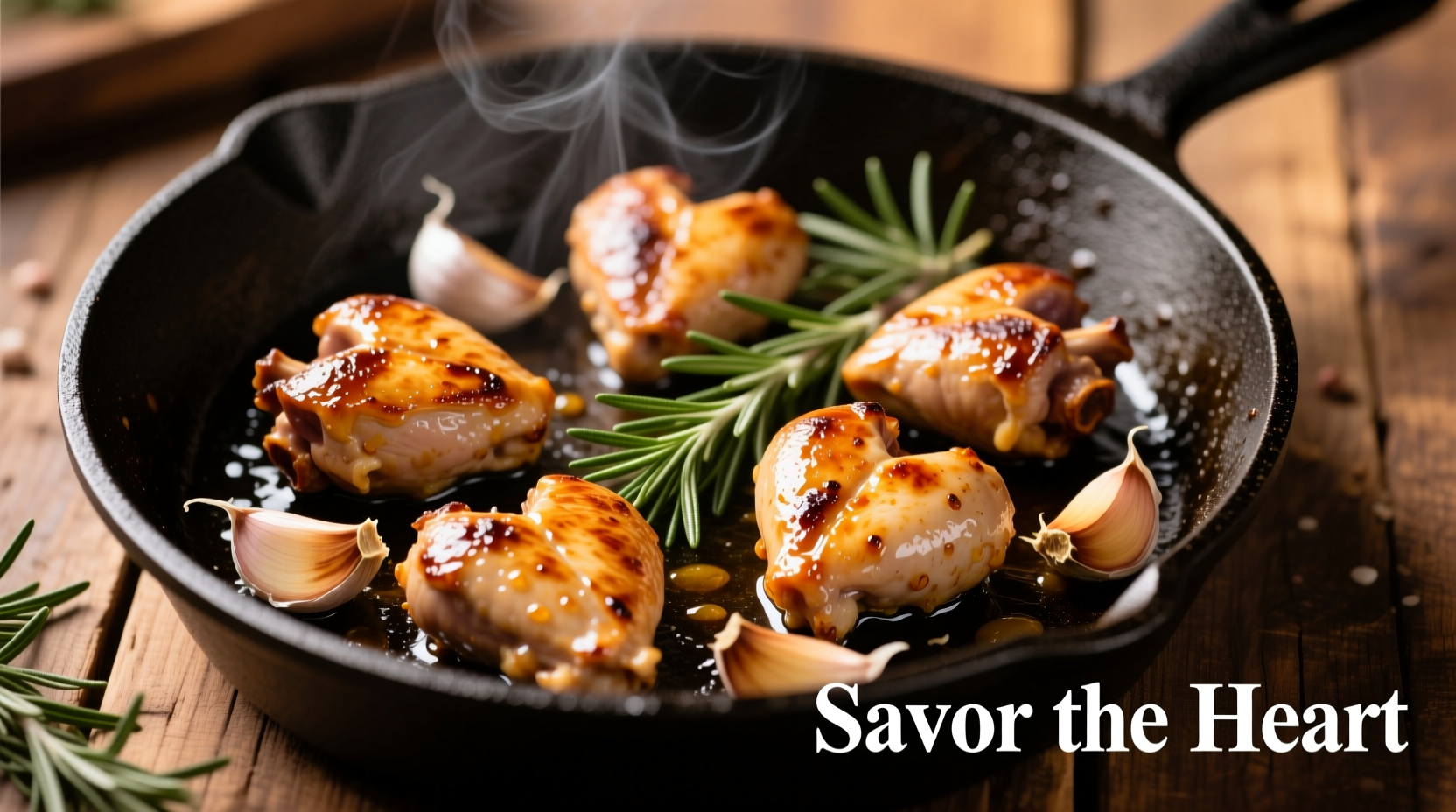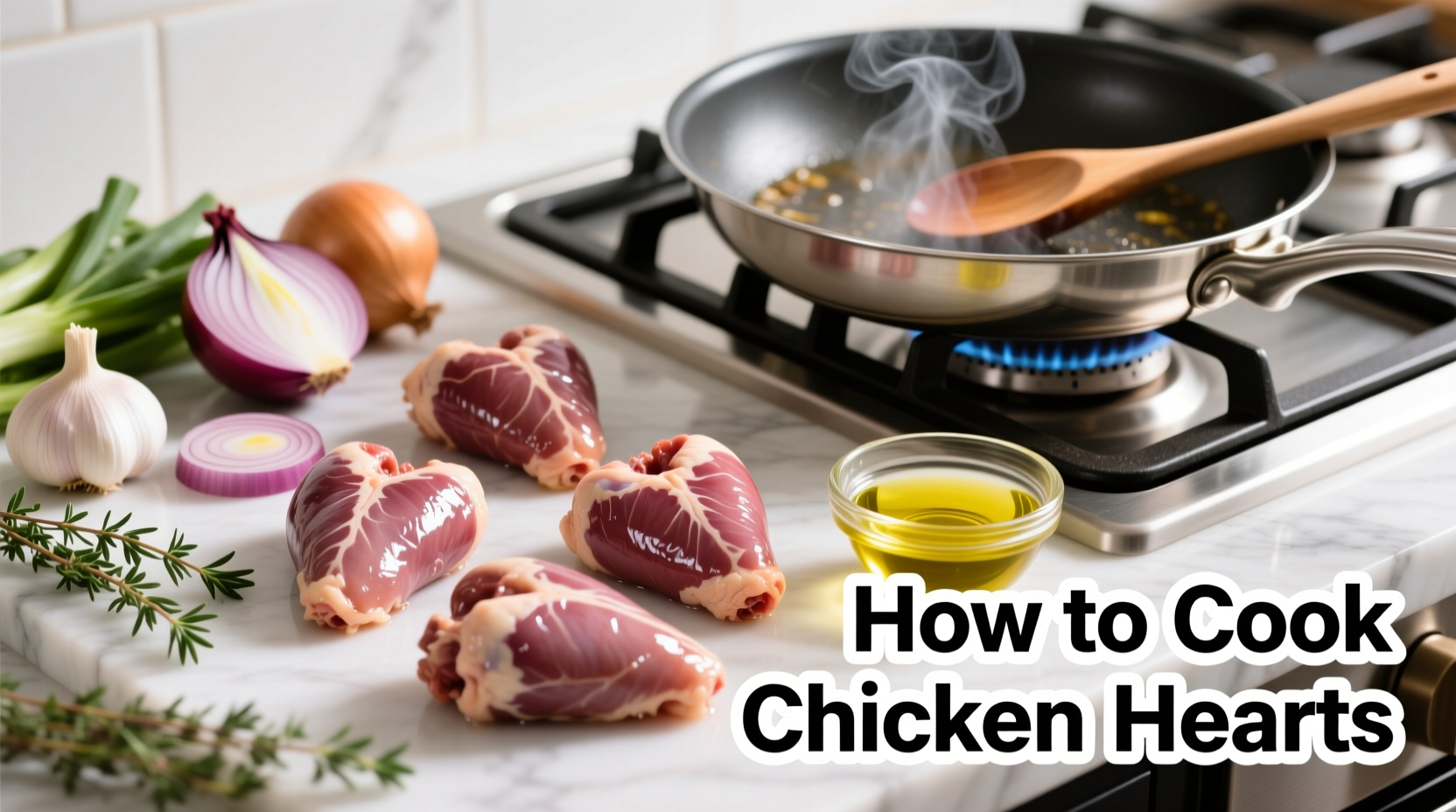Why Chicken Hearts Deserve a Place in Your Kitchen
Often overlooked but packed with iron, zinc, and B vitamins, chicken hearts offer a sustainable, affordable protein source that cooks faster than most cuts. Unlike tougher organ meats, they have a mild, slightly sweet flavor that absorbs seasonings exceptionally well. When prepared correctly, they're tender with a pleasant bite—not rubbery or metallic as many fear.
| Nutrient (per 3oz) | Chicken Hearts | Chicken Breast | Liver |
|---|---|---|---|
| Protein | 14g | 26g | 21g |
| Iron | 3.5mg (19% DV) | 0.4mg | 5.2mg (29% DV) |
| Zinc | 2.1mg (19% DV) | 0.7mg | 4.2mg (38% DV) |
| Calories | 90 | 140 | 135 |
Nutritional data sourced from USDA FoodData Central (2023). Chicken hearts provide comparable nutrients to liver with milder flavor and easier preparation.
Your Step-by-Step Guide to Perfect Chicken Hearts
Preparation Timeline: 10 Minutes Total
- 0-2 min: Rinse hearts under cold water, trim excess fat and connective tissue using kitchen shears
- 2-5 min: Soak in 1 tbsp vinegar + 2 cups water for 3 minutes to remove impurities (optional but recommended)
- 5-7 min: Pat completely dry with paper towels—moisture is the enemy of proper searing
- 7-10 min: Toss with ½ tsp salt, ¼ tsp black pepper, and chosen aromatics
Cooking Methods Compared
Chicken hearts reach perfect doneness at 160°F internal temperature. Overcooking causes toughness—use a meat thermometer for best results.
Pan-Searing (Best for Beginners)
- Heat 1 tbsp oil in cast-iron skillet over medium-high heat until shimmering
- Add hearts in single layer (don't crowd pan)
- Cook 3-4 minutes per side until golden brown
- Add 2 crushed garlic cloves and 1 tbsp butter during last minute
- Rest 3 minutes before serving
Grilling (Ideal for Summer)
- Preheat grill to 400°F
- Thread hearts onto skewers with cherry tomatoes
- Grill 4-5 minutes per side, basting with olive oil and rosemary
- Finish with lemon zest and flaky salt

Flavor Pairing Guide
Certain ingredients transform chicken hearts from ordinary to extraordinary:
- Acids: Lemon juice, apple cider vinegar, or balsamic reduction cut through richness
- Aromatics: Rosemary, thyme, and smoked paprika complement without overpowering
- Umami Boosters: Anchovy paste (¼ tsp) or Worcestershire sauce enhances depth
- Texture Contrast: Serve over creamy polenta or with crispy fried capers
Avoid These 3 Common Mistakes
- Skipping the dry step: Wet hearts steam instead of sear—always pat thoroughly dry
- Overcrowding the pan: Causes temperature drop leading to gray, tough results
- Overcooking: They cook 50% faster than chicken breast—8-12 minutes total is ideal
3 Simple Chicken Heart Recipes
1. Provençal Chicken Hearts (15 Minutes)
- Sear hearts as directed above
- Add ¼ cup white wine, 1 chopped shallot, and 10 pitted Kalamata olives
- Simmer 2 minutes until sauce reduces slightly
- Finish with chopped parsley and lemon juice
2. Asian-Style Skewers (20 Minutes)
- Marinate hearts 10 minutes in 2 tbsp soy sauce, 1 tbsp honey, 1 tsp ginger
- Grill or pan-fry 4-5 minutes per side
- Serve with quick-pickled cucumbers (15-minute vinegar soak)
3. Hearts in Rich Mushroom Sauce (25 Minutes)
- Sear hearts and set aside
- Sauté 8 oz mushrooms until browned
- Add ½ cup chicken stock, 2 tbsp cream, and hearts
- Simmer 5 minutes until sauce coats spoon
Storage and Safety Guidelines
Chicken hearts follow standard poultry safety protocols:
- Refrigerate within 2 hours of cooking; consume within 3-4 days
- Freeze raw hearts up to 9 months in airtight container
- Always cook to minimum 160°F internal temperature
- Thaw frozen hearts in refrigerator—not at room temperature
According to USDA Food Safety guidelines, organ meats require the same temperature standards as other poultry due to potential pathogens. Never serve chicken hearts rare.











 浙公网安备
33010002000092号
浙公网安备
33010002000092号 浙B2-20120091-4
浙B2-20120091-4